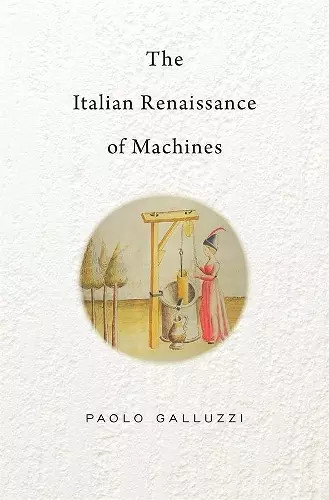The Italian Renaissance of Machines
Artistry and Engineering in a Transformative Era
Paolo Galluzzi author Jonathan Mandelbaum translator
Format:Hardback
Publisher:Harvard University Press
Published:28th Feb '20
Should be back in stock very soon

This book highlights the intersection of art and engineering during the Renaissance, showcasing how figures like da Vinci influenced modern science and technology.
In The Italian Renaissance of Machines, Paolo Galluzzi explores a transformative era in history that not only celebrated art and literature but also revolutionized technology. This lavishly illustrated volume takes readers on a journey through the fifteenth and sixteenth centuries, highlighting the remarkable fusion of artistry and engineering that defined the period. Through the lens of notable figures like Taccola and Leonardo da Vinci, the book reveals how their innovative spirit laid the groundwork for future scientific advancements, particularly in the realm of mechanics.
Galluzzi emphasizes the emergence of the artist-engineer, a crucial historical figure who bridged the gap between artistic creativity and technical expertise. Unlike their medieval predecessors, who often remained anonymous, these artist-engineers became celebrated figures, sought after by powerful patrons. Their work not only contributed to the aesthetic achievements of the Renaissance but also propelled a new understanding of mechanics and engineering. The book illustrates how these individuals, equipped with diverse skills honed in the Renaissance workshop, became catalysts for change in a rapidly evolving world.
The Italian Renaissance of Machines enriches our understanding of the period by shedding light on lesser-known masters like Giovanni Fontana. It demonstrates how the ambitious projects of da Vinci paved the way for Galileo and his groundbreaking contributions to mathematical science, ultimately marking a pivotal moment in the history of human innovation.
Galluzzi’s project in this erudite and beautifully illustrated book is to consider Renaissance humanism from the relatively unfamiliar perspective of machine design…Leonardo’s projects, like Taccola’s, combined philosophy, art, experimental science, performance, politics, diplomacy, and fantasy. It’s not that these engineer-humanists did many different things, but that they regarded all things as one. -- Jessica Riskin * New York Review of Books *
Galluzzi has long been one of the premier scholars of fifteenth- and sixteenth-century history of technology and science. But most of his scholarship is not available in English and is thus inaccessible to those who do not read Italian. This beautifully written book will bring his scholarship to the general reader, while promising to be of great use to specialists. -- Pamela O. Long, author of Engineering the Eternal City: Infrastructure, Topography, and the Culture of Knowledge in Late Sixteenth-Century Rome
In a period of economic development, profound urbanization, and constant warfare, artist-engineers offered Renaissance society creative solutions to technical problems, new ways of imagining and understanding the world, and empirical methodologies that laid the groundwork for the new sciences. Galluzzi’s richly illustrated book therefore does well to demonstrate how artist-engineers revolutionized the conceptualization and production of textual and visual content, and, consequently, produced radical innovations in graphic representations that reflect the ever-fascinating world that is the Italian Renaissance. -- Jennifer Strtak * Renaissance and Reformation *
Galluzzi, director of the Museo Galileo since 1982, is eminently qualified to synthesize this vast body of work…His observations display a freshness, immediacy, and acuity…Anyone who studies or teaches the renaissance of arts and letters will benefit from this more inclusive view of the period. -- Michael Kucher * Technology and Culture *
Galluzzi is the doyen of Leonardo da Vinci scholars today…This is apt to become a canonical text in its field. -- Bert Hall * Renaissance and Reformation *
An authoritative introduction to Galluzzi’s scholarly achievement, making it accessible as a reference work to an international English language reading audience, while at the same retaining stylistic traces of the vividness of the lectures. -- Sven Dupré * Journal of Modern History *
ISBN: 9780674984394
Dimensions: unknown
Weight: unknown
296 pages